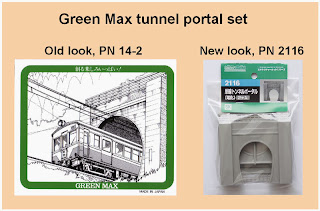Over this past weekend the Musashi-Koyama modules were part of the AsiaNrail layout setup at the Los Altos History Museum for their annual Train Days event. This was the 4th Train Days that I have been involved with, the first 3 being part of the Ntrak layout and this year with the AsiaNrail layout. Being only about 3 miles from my house, it's my closest train show. This was only the 2nd exhibition for the Musashi-Koyama modules.
Besides the AsiaNrail layout, they also had Tom Knapp's Nn3 layout in the museum exhibit room with us, plus outside in their large patio there were G scale electric and live steam layouts, an O scale layout, and a static display of 7-1/2" gauge steam locomotive and rolling stock from the nearby
Portola Valley & Alpine Railroad.
Our layout consisted of a single track central loop with through staging yard and three junctions that connected stub ends. Here is a view of the central loop part of the layout. Besides the continous running of the loop, we also ran point to point operations between the stubs.
My Musashi-Koyama module set was part of one of the three stub ends. Single track entry into the modules from the left with a crossover to access either of the station tracks.
My E257 Azusa-Kaiji was one of 5 Japanese trains that I ran on the layout. We had many different trains running on the layout, even a 100 Series Shinkansen and a Caltrain because so many visitors requested those.
Here is a view from the far end of my stub line. Before the next show, I will be installing some plexiglass screens along the front edge as some of the details on the front seem too tempting for small hands.
My Tomix model of an 8800 set and Paul's new Kato model of a JR DD13 parked at one of the other stub end yards. This module has several stub end yard tracks and also has a passenger platform seen in the background.
Paul's Treat Street module was at the end of the third stub. This module is based on scenes in Korea and features a model of the Sungnyemun Gate.
As the sun was going down, the last few pieces of the layout were being loaded into Pauls van. The whole layout easily fit into this van and my pickup.
As we were taking down the layout the museum's staff gathered all the layout exhibitors together to a drink and a little celebration and thanked us for taking part in their event. They announced that they had nearly 3000 visitors to the exhibit over the weekend. That was more then had attended the Great Train Expo in San Jose the weekend before. I was at that show with the Ntrak group and had noticed the attendance was very light.
The
Los Altos History Museum is a community based free admission museum and they depend on donations and fundraising events like Train Days for their funding. They were quite happy with the results of Train Days 2013.






















































